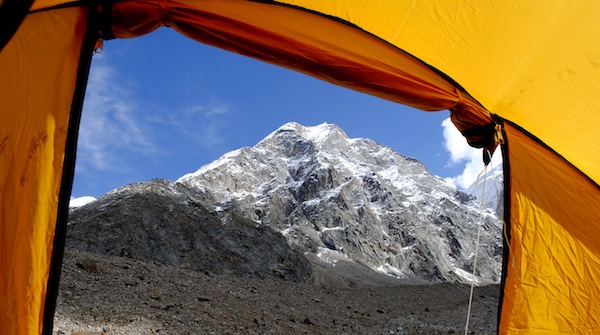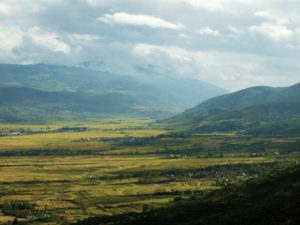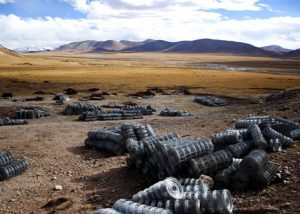Early one autumn morning, a few senior citizens gather outside a bakery in downtown Srinagar. While they wait for the loaves to come out of the oven, the talk turns to weather.
“I have never seen such a hot summer before,” said Sultan Parray, 75. “I have seen long spells of dry weather, but in the last two to three years, the heat factor has really stunned me.” Another septuagenarian, Mohammad Nawab, said the heat is a puzzle. “This year’s summer was far too exceptional. I think it broke all records,” he observes.
At least since Mughal emperor Jehangir declared the Vale of Kashmir “heaven on earth” in the sixteenth century, people have been escaping here from the Indian summer. But this summer, the sale of air-conditioners in Kashmir went up by over 80%, thanks to the prolonged scorching weather. Air-conditioners appeared in shops here only last year – nobody had needed them before. But now the situation is different. “The sales have been huge this year. I sold more than 300 ACs in just two months,” said Jowhar Ahmed, who also sells refrigerators. Another shopkeeper, Owais Ahmed, said: “The demand was so good that we had to regularly add to our stocks.”
An article in a recent issue of the journal Nature corroborated what the people of Kashmir are feeling. It reported a study carried out by Norwegian scientist Andreas Kaab and his French colleagues. “In most of the satellite images that we used to support our study, the glaciers in J&K (Jammu and Kashmir) look really bad with not much snow accumulation area left,” Kaab was quoted as saying.
The study says that apart from Jammu and Kashmir, there is no immediate threat to glaciers in other parts of the Hindu Kush-Karakoram-Himalayas (HKKH) region. The scientists have used satellite data to study glaciers in the HKKH region, in the wake of many conflicting reports on present conditions and future of the Himalayan glaciers.
Looking at glacier area change in the Jhelum river basin from 1980 to 2010, scientists of the Kathmandu-based International Centre for Integrated Mountain Development (ICIMOD) have also found evidence of more rapid shrinking of glaciers inJammu and Kashmir. The Jhelum flows through theKashmir valley.
“Our study shows the glacier area loss from 1980 to 2010 was about 21%,” Samjwal Bajracharya of ICIMOD’s Mountain Environment and Natural Resources Information Systems Division told thethirdpole.net. “The loss is the highest from 1990 to 2000 at 11%, and least from 2000 to 2010 at 4.4%. The trend in loss of glacier area is similar to that in the Nepal Himalayas.”
In an August report called New Studies Provide Insights on Glaciers in the Greater Himalayan Region, ICIMOD scientists said there was now stronger evidence of overall ice-mass loss from glaciers in the greater Himalayan region.
The report went on to say that, despite the overall loss, no significant ice mass changes have occurred in the Karakoram region in the early part of the twenty-first century – the so-called Karakoram anomaly. Quoting the recent studies, the report concluded that the maximum ice mass loss and glacier shrinkage were observed in the south-eastern Himalayas and in the Jammu and Kashmir region.
Shakil Romshoo, who teaches geology and geophysics at the Srinagar-based Kashmir University, told thethirdpole.net that studies by him and his colleagues on nearby glaciers like the Kolhai have also shown that glaciers are melting at a faster rate than they used to melt in the past. “We have been saying for many years that our glaciers are melting at an exceptional rate,” Romshoo said. In 2009, a three-year study by a team of Kashmir University scientists led by Romshoo found that the Kolhai glacier area had shrunk from over 13 square kilometres to 11 in the past 40 years.
It is not just the glaciers that are in trouble. In December 2009, H.S. Negi of the Snow and Avalanche Study Establishment – which works under India’s defence ministry – and his colleagues published a paper in the Journal of Earth System Sciences, saying snowfall was declining in Jammu and Kashmir, while the temperature was on the rise. Their findings were based on 20 years of snowfall and temperature data, between 1988 and 2008.
They had also done their own studies using multi-temporal sensor for the November to April periods in the three years from 2004 to 2007. The scientists found that, across the Kashmir valley, the total snowfall in the winter of 2004 to 2005 was 1,082 centimetres. It declined to 968 centimetres the following winter and further dropped to 961 centimetres in the winter of 2006 to 2007.
Image by BlackZero_007.




